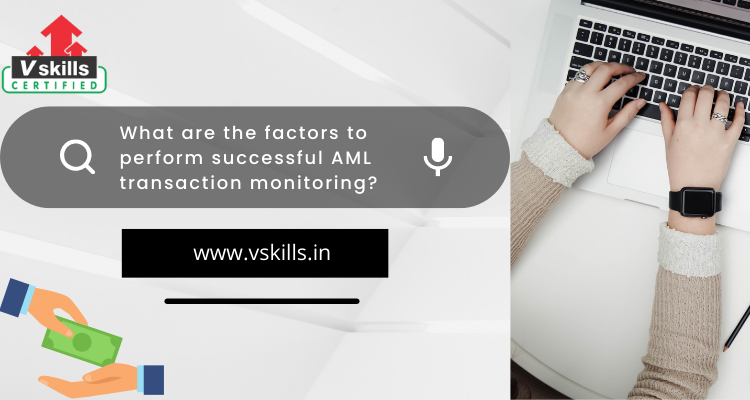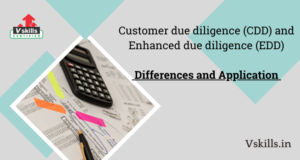Greetings dear readers, and welcome to today’s section where we shall be discussing one of the important questions of the AML-KYC domain: ‘What are the factors to perform successful AML transaction monitoring?’. Before listing the factors, we shall begin with understanding what Transaction Monitoring is, and its scope in AML compliance.
Meaning and Scope of Transaction Monitoring
Transaction monitoring has in the past few years, become an important part of AML procedures, in preventing money laundering and terrorist financing. All banks and financial institutions ought to have implemented some form of transaction monitoring in order to scan for any suspicious transactions executed to or from existing customers. Considering the difficulty in doing so manually, many organizations have an automated system in place.
The Meaning:
Transaction monitoring refers to a set of solutions that allow banks and financial institutions to monitor in a real-time and daily basis, the transactions made by their clients. These are solutions that look at current transactions, and at the same time, also analyse a client’s past information and account profile. Such analysis is aimed to provide insights such as the risk levels or to predict the future activity of the customers. Transaction monitoring software generates alerts when a situation violates the rules as defined for the customer profile, during the customer transactions.
The Scope:
Businesses need the ability to detect activities of high-risk and those that arouse suspicion automatically. The significance of implementing Transaction monitoring cannot be emphasized enough, as it is of utmost importance to a financial institution’s AML procedures since it can detect suspicious activities like cash deposits that are over a certain threshold, or wire transfers. Transaction monitoring procedures can allow institutions to zero in on financial crimes much earlier than they actually happen. Transaction monitoring software for AML can also include sanctions screening and customer profiling features.
Information obtained from transaction monitoring serves the primary purpose to meet various AML requirements, for filing Suspicious Activity Reports (SARs), Counter-Terrorist Financing (CTF) requirements, and other reporting obligations. Thus, Transaction monitoring solutions provide AML and CFT capabilities to businesses.
The Reasons for Transaction Monitoring
The importance of Transaction Monitoring can be understood by knowing the following reasons:
- Globalization and Technological advancements resulting in an Expansion of the Financial Transaction space
- Compliance Requirements with Changing Regulations
- Detection and Prevention of Financial Crimes
- Access to Information vital for Compliance
- Risk and Financial Sanctions Avoidance
Most importantly, transaction monitoring is a vital first step in fulfilling any financial institution’s AML compliance and CTF procedures. Additionally, transaction monitoring provides confidence to both the regulators and banking partners. It reflects upon the seriousness with which a financial institution handles AML and CTF regulations, in doing all it can to prevent criminal activity.
Transaction monitoring enables institutions in determining and managing the potential risk of clients, thus allowing them to take a risk-based approach. Determining the risk level is done by considering a lot of factors of a customer, such as their employment status and type of employment, country of residence, etc. Once the risk level of a particular client is ascertained, the financial institution can adjust its monitoring methods for the said client accordingly.
Many businesses, when faced with the task of deciding on the best transaction monitoring solution, have to answer the following two questions, since choosing the right approach is critical:
1. To Automate Transaction Monitoring or have a Manual System?
Automated transaction monitoring is far superior when compared to manual transaction monitoring, thanks to the cost-effectiveness and real-time capabilities in reporting. Automation has also the advantage of producing error-free results.
However, automated transaction monitoring systems, irrespective of technological advancements, still require manual intervention in order to be truly successful. Real people cannot be replaced entirely, as they will be needed to ensure that the software being used is working as it should be.
False positives:
It becomes difficult for firms using an automated transaction monitoring solution to fine-tune the rules being followed and to apply different sets of rules to different types of customers based on the scenarios. So, if such rules are inaccurate, it will result in a high number of false positives, creating tedious work for compliance officers. One needs to have software that is adaptive enough to apply a unique set of rules for different types of clients.
2. In-house vs. Third-Party solutions
If an institution is choosing to develop an efficient program or solution in-house, it may need to rope in an expert in compliance and risk. Flexibility and Scalability of a solution are two of the factors that have utmost importance, considering that the regulations landscape surrounding transaction monitoring is constantly evolving. It is also important to be able to create a trail of all activity to clearly backtrack and understand what is happening and to potentially report alerts to the relevant authorities.
Suspicious Activity Reports (SAR) – What are they?
Suspicious Activity Reports (SARs) form an important part of the transaction monitoring process. It is the duty of the financial institution to report any potentially suspicious transaction, immediately upon detection, to the concerned authorities. In most countries, this is done via the submission of a SAR to the appropriate financial authority. Clearly, it is crucial for financial institutions to understand when and how to file a SAR.
The following situations may trigger a SAR:
- Suspect transactions, or an unusual account activity
- Transactions beyond a certain threshold value
- Domestic or International money transfers that are above a certain value
- Large cash deposits and/or withdrawals
SAR is not limited to customers of an institution; they are also required by organizations if they detect employees who have engaged in suspicious behaviour, or if their computer systems have been compromised in any way.
Transaction Laundering
Transaction laundering is a newer type of financial crime in which a criminal may offer to sell online, something of an illegal kind, under the guise of a legal product. Financial institutions are now expected to have transaction monitoring capable of spotting transaction laundering and can be penalized by large sums, and risk reputational damage upon failure to do so.
Identifying transaction laundering can be simplified through transaction monitoring. For example, a suspected seller’s products and revenue often won’t match the sales projections. One may also look out for sudden spikes in sales activity involving transaction laundering, for any mismatch between the products and the sales figures.
Factors influencing a Successful AML Transaction Monitoring solution
Coming to the topic of discussion, we can list the following factors as determinants of successful AML/CTF controls:
- Diversity (including geographical locations) of a financial institution’s operations
- The Business Nature, Scale, and Complexity
- The extent to which deals are carried out through intermediaries and third parties by the financial institution
- The extent of non-face-to-face transactions carried out by the financial institution
- Volume and Size of transactions and the Distribution Channels used
- The degrees of risk associated with each area of operation of the financial institution
- The profiles of the customers, products, and customer activities and interactions with the financial institution
Summary
So, to conclude this discussion, we have seen the Transaction Monitoring process from the view of the following four steps:
- Knowing the Customer, which involves risk assessment and customer due diligence
- Risk-based Calibration, which requires the setting of transaction thresholds for different risk levels and scenarios based on the customer profiles
- Robust Implementation that needs to perform pre-transaction checks and alerts handling
- Resolve and enhance the solutions through quality assurance, reporting activities, and system refinements
Malicious customers usually execute a few “test” transactions to see if their activities are flaggable by the systems that are in place, and use of effective transaction monitoring solutions can identify that. And although it is not yet a worldwide legal requirement for financial institutions to have a transaction monitoring system in place, such institutions that are without one can land in a lot of trouble. As discussed earlier, failure to have a system that can take a risk-based approach to monitor clients on a continuous and real-time basis can not only risk a financial institution its reputation but can also lead to penalties and other legal repercussions.
Before winding up this section and taking leave from my readers, I would like to ask a couple of questions for you to answer: would you not like to know in further detail about the AML-KYC compliance processes and methods, requirements, the role of institutions, and more? How is your interest in getting certified to validate your knowledge in the domain, and enhance your CV before that next AML Compliance job offer? Vskills provides the Certified AML-KYC Compliance Officer aimed at enhancing the quality of compliance with the directions of RBI in combating illegal operations and the movement of funds through the use of banking channels. You can benefit from the Practice Tests, and see if you are prepared to face the latest Interview Questions!




